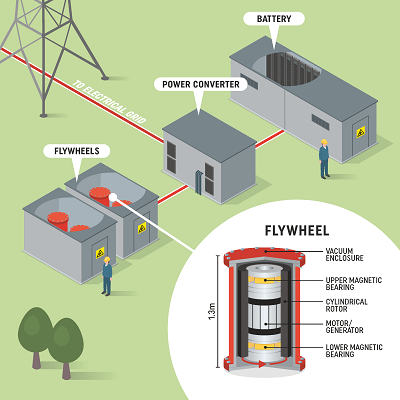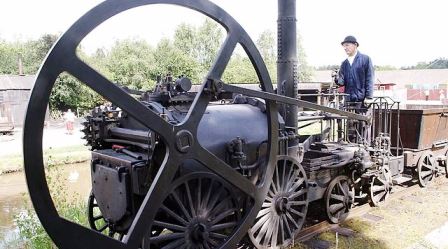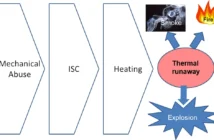A flywheel is a rotating device that accumulates energy. Moreover, we can extract this energy as electricity. We can also use electricity to get the flywheel spinning in the first place. Scientists have been pondering how best to use this to stabilize the grid for some time. Recently the University of Sheffield, England announced it was connecting flywheel energy to the UK grid because it had found a way for this to work.
More about Connecting Flywheel Energy to the UK Grid

The Sheffield project uses a hybrid battery-flywheel combination to respond to changes in grid frequency. First, it uses grid electricity to run the flywheel up to full rotating speed. Then the flywheel creates and stores rotational energy analogous to the way an electro chemical battery works.
Connecting flywheel energy to the UK grid involves siphoning the energy to a battery bank. And then feeding it to the national grid through a power converter that makes it frequency compatible. Initial power output is 500 kilowatts teamed with 10 kilowatt-hours of energy storage. However the university plans to upgrade their hybrid system to double this amount later.
The Significance of Renewable Energy Penetration

Furthermore, as the university’s industry alliance partner explains, “Increasing renewable penetration is a huge challenge for grid stability worldwide.
But adaptive flywheel technology allows us to tailor the flywheel’s properties to local conditions.” Sheffield University has already successfully demonstrated the system during a ‘frequency event’.
The flywheel-hybrid project is the brainchild of its CREESA Center for Research into Electrical Energy Storage & Applications. A second CREESA project involves using a two-megawatt lithium-titanate battery to stabilize grid frequency at the UK standard of 50 Hertz. But for now the focus is on connecting flywheel energy to the UK grid, and showing that it works.
Related
Hybrid Ferries Span the Sea in British Columbia
Batteries Bring Stability to UK Grid
Preview Image: 1802 Loco Uses Flywheel to Even Single-Cylinder Power
Video Share Link: CREESA Battery Project




